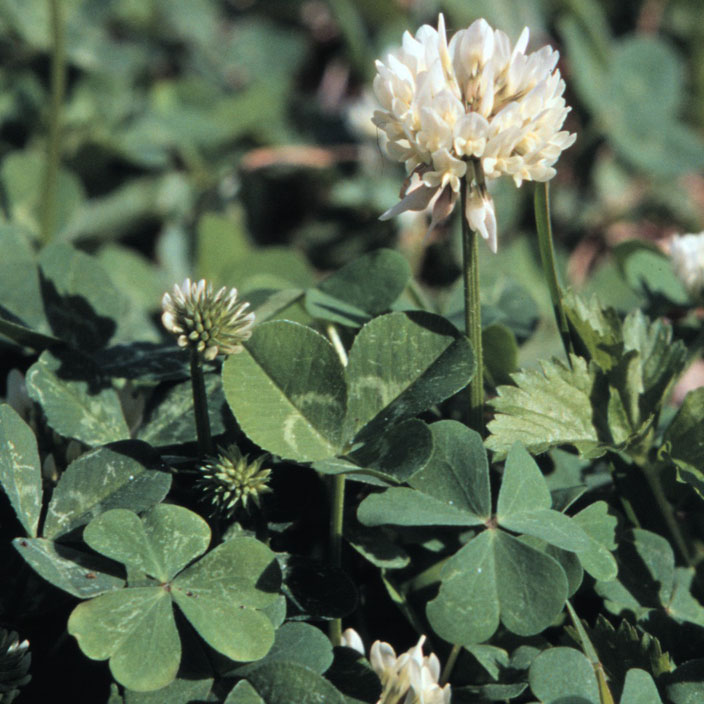How it Works: Preen Garden Weed Preventers
Here's how our Garden Weed Preventers prevent weeds before they even sprout rather than killing them after they’ve already had the chance to grow.
White clover survives mowing by growing just lower than turfgrass. Learn how to keep white clover weeds out of your garden and landscape.
Several types of clover pop up in garden beds and lawns, but white clover is the most common. It is found throughout most of North America and is primarily a lawn weed. Ground-hugging white clover (Trifolium repens) survives mowing by growing just lower than turfgrass. Its dark green leaves are shaped like shamrocks in three-leaf clusters. In summer, flower stems rise an inch or two above the leaves, and are topped with fingertip-sized pincushion balls of pinkish-white flowers.
Patches of clover generally start from seed. The very hard seeds are resistant to the elements. They germinate best in cool, damp weather. Once sprouted, white clover becomes a cold-hardy perennial weed that quickly spreads by runners (stolons), forming dense creeping mats that can choke out grass.
White clover usually out-competes grass, isn’t very aesthetic and has a propensity for attracting bees.

White Clover Photo courtesy Richard Old www.xidservices.com
Where isolated plants appear in garden beds white clover can be hand-dug. Digging is much more difficult in lawns, especially when colonies have spread. Clover outbreaks can be controlled with a granular broadleaf weed killer, such as Preen Lawn Weed Control. Granular products work best when applied after a rain or early in the morning when moisture on the slightly hairy clover leaves helps the granules stick. Early fall applcations are the most effective although broadleaf weed killers can help any time clover is actively growing. Always read and follow the label directions.
Keeping the lawn thick and dense helps prevent clover outbreaks. In garden beds, Preen Extended Control Weed Preventer will prevent clover for up to 6 months.